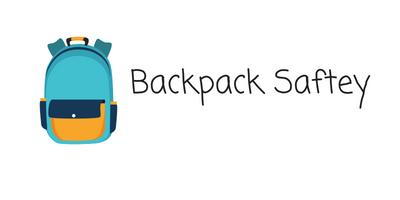
What do I need to know about backpack safety?
Backpacks are a popular and practical way for children and teenagers to carry schoolbooks and supplies. When used correctly, backpacks can be a good way to carry the necessities of the school day. They are designed to distribute the weight of the load among some of the body's strongest muscles.
Choose the right backpack. Look for the following:
BASICS:
- A backpack that is too heavy and is worn incorrectly on the back causes the child to assume an extreme forward posture in an effort to compensate for the additional weight. This can lead to headaches, backaches, shoulder pain and numbness/tingling into the arms. After long periods of time, it can lead to a weakening of muscles in the neck, mid-back, abdominals, and low back. Those muscles can end up “molded” into permanent deficient positions.
PADDING:
- Look for shoulder straps that are well padded. Unpadded straps can cause pain in the shoulders, restrict circulation, as well as, numbness and/or tingling in the neck and arms.
- Well padded straps will distribute the load over a greater area, protecting sensitive nerves and blood vessels that pass underneath.
- A padded back protects against sharp edges on objects inside the pack and increases comfort.
STRAP PLACEMENT:
- Look for packs with straps on the top and bottom for a perfect two-point fit from shoulder to waist. Adjust the pack high and tight.
- Always wear both shoulder straps to distribute weight evenly.
BACKPACK POSITION:
- The bottom of the pack should rest in the curve of the lower back. It should never rest more than four inches below the child’s waistline.
- Lumbar support takes stress off the back and encourages healthy posture by using the backpack’s weight to maintain the natural curves of the spine
LOADING A BACKPACK:
- Load heaviest items closest to the child’s back to maintain their center of gravity.
- Pack items neatly and organized to keep books and materials from sliding around in the pack, which causes shifting of weight to one side.
-Multiple zippered outer compartments provide easy storage for keys, pens, pencils and calculators.
- Pack only what you need for that day.
- Never allow a child to carry more than 15% of his or her body weight. That means a child who weighs 100 pounds should not carry a school backpack that weighs more than 15 pounds
SIZE GUIDELINES:
- An average-sized elementary school student or petite adult who measures 15” or less from top of the shoulders to the natural waist should have a small backpack with a maximum of 1650 cubic inch capacity.
- An average-sized middle school student and smaller adult who measures between 15” and 17” from top of the shoulders to the natural waist should have a medium backpack with a maximum of 2000 cubic inch capacity.
- A taller/larger teen who measures more than 17” from the top of the shoulders to the natural waist should have a larger backpack with a maximum of 2600 cubic inch capacity.
ROLLING BACKPACK:
-This type of backpack may be a good choice for students who must tote a heavy load. Remember that rolling backpacks still must be carried upstairs. They may be difficult to roll in snow.
PARENTAL TIPS:
- Monitor what your child is carrying to school each day to help him or her avoid carrying unnecessary items which add weight to the backpack.
- Encourage children to exercise to strengthen muscles in the torso, including the lower back and abdominal muscles.



